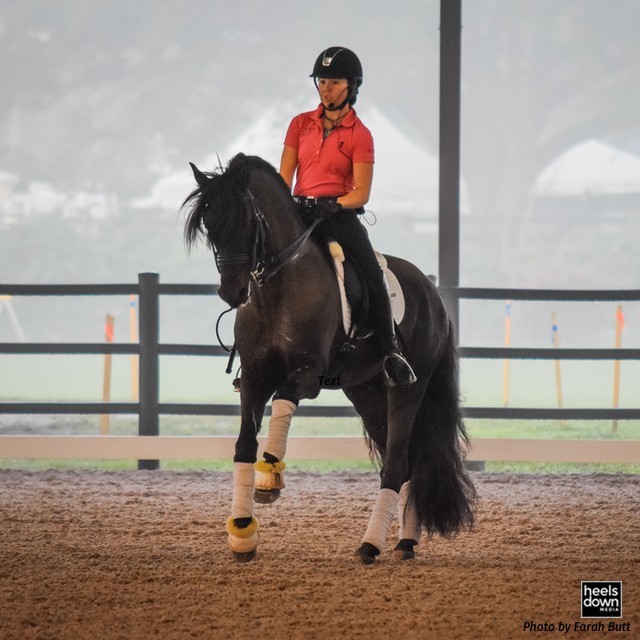Dressage Explained: Understanding The Levels

To an outsider, the levels of dressage can seem a bit confusing. They don’t make a lot of sense other than first through fourth level are in numerical order. To take some of the confusion out of the situation, we’re here to explain the basics of dressage.
The Basics:
Introductory Level: This level is made to provide an opportunity for horses and riders to learn about dressage. Riders at this level must be able to demonstrate elementary skills, correct geometry, and the effectiveness of the rider. Riders must be able to perform the basic walk, trot, and canter gaits and change rein.
Training Level: Building upon the basics of the introductory level, training level begins to place more emphasis on the horse’s gaits and that they move freely in a steady rhythm while accepting contact with the bit. This can include shallow loops at the canter, stretch circles at the trot, and canter to trot changes across a diagonal.
First Level: At this level your horse must have thrust, power in their hind end, and start to achieve thoroughness in their back. This is the last of the more basic levels. Riders and horses must be able to perform 10m circles at trot, 15m circles at canter, lengthen the stride in trot and canter, leg yield, and counter canter.
The Not So Basics:
Second Level: Welcome to playing with the big dogs. Well, at least the next level of big dogs. Second level is where things begin to pick up now that you’ve demonstrated understanding of the basics. There’s a lot more power in the hind quarters required at second level due to the need to perform collection, medium paces, Travers, simple changes, 10m canter circles, and half turn on haunches. Additionally, a greater degree of straightness, suppleness, and self-carriage is expected at this level.
Third Level: At this point, your horse should know the basics and have an established uphill balance in their work. Now they must begin to perform increased engagement in their movement as well as more refined transitions between collected, medium, and extended gaits. Third level introduces extended gaits, flying changes, half pass at trot, Renvers, and half pass at canter. At this point, if you receive qualifying scores at first, second, and third level then you can receive your United States Dressage Foundation Bronze Medal.
Fourth Level: Things are serious now. You better know your stuff and be putting in the work to create suppleness, power, and precision within your dressage work. At this level you will see collected walk, collected canter, walk pirouettes, multiple flying changes, tempi changes every fourth stride, and partial pirouettes in canter.


